
Polaris Dawn crew prepares for world's 1st private spacewalk with SpaceX
In an exclusive SPACE.com interview, the Polaris Dawn crew outlined the meaningfulness of their private space voyage.
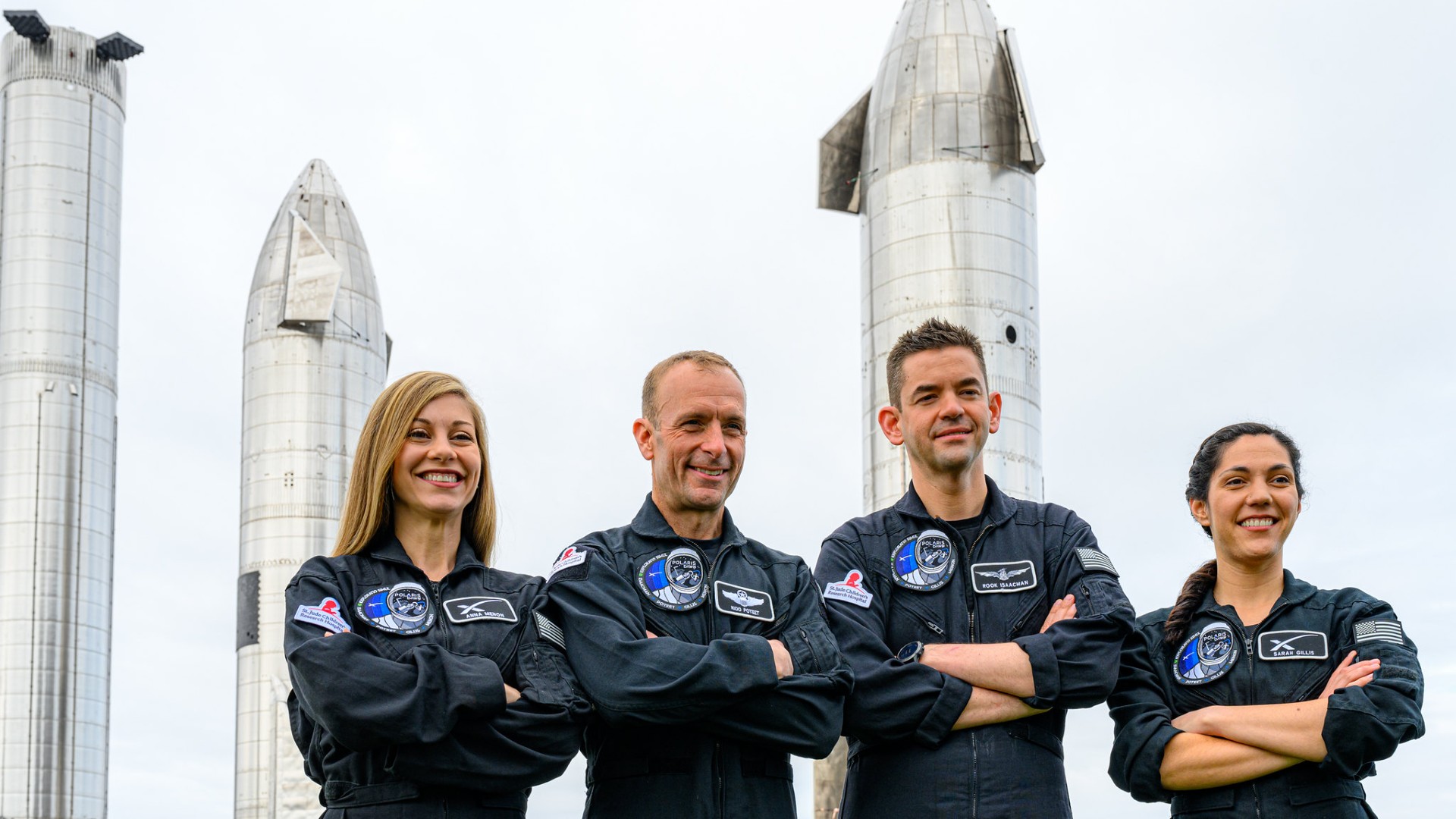
BOULDER, Colorado — The crewmembers of the Polaris Dawn mission are busily training for their orbital flight early next year, one that will see the first commercial spacewalk as well as carry out studies on the long-term implications of microgravity and radiation on human health.
Polaris Dawn's four-person team visited the University of Colorado, Boulder on Nov. 14, detailing their flight with aerospace professors and students. The university's BioServe Space Technologies center is orchestrating a set of investigations to perform on Polaris Dawn.
As the name suggests, Polaris Dawn is the sunrise on a three-part Polaris Program that includes the first crewed flight of the SpaceX Starship. In an exclusive SPACE.com interview, the Polaris Dawn crew outlined the meaningfulness of their private space voyage onboard their SpaceX Crew Dragon craft, targeted for liftoff no earlier than March 2023 from NASA's Kennedy Space Center.
Related: Meet the four private Polaris Dawn astronauts SpaceX will launch into orbit this year
Opening up space
"I don't think that human spaceflight is going to be limited to just world superpowers and a handful of extraordinarily lucky and capable people. It's going to open up," Jared Isaacman, mission commander for Polaris Dawn, told Space.com.
No stranger to space travel, Isaacman was commander of Inspiration4, the world's first all-civilian space mission that flew in September of last year. "There's a lot of responsibility to make sure that these types of missions are incredibly impactful," he said, to encourage people not to view human space travel in solely the "right stuff movie way," he said.
A well-heeled entrepreneur, Isaacman has purchased flights from SpaceX in order to create the Polaris program.
Get the Space.com Newsletter
Breaking space news, the latest updates on rocket launches, skywatching events and more!
Human spaceflight is important, Isaacman said, "and by making great progress in space we can make a lot of progress here on Earth too. I think we're well on the way towards that dream."
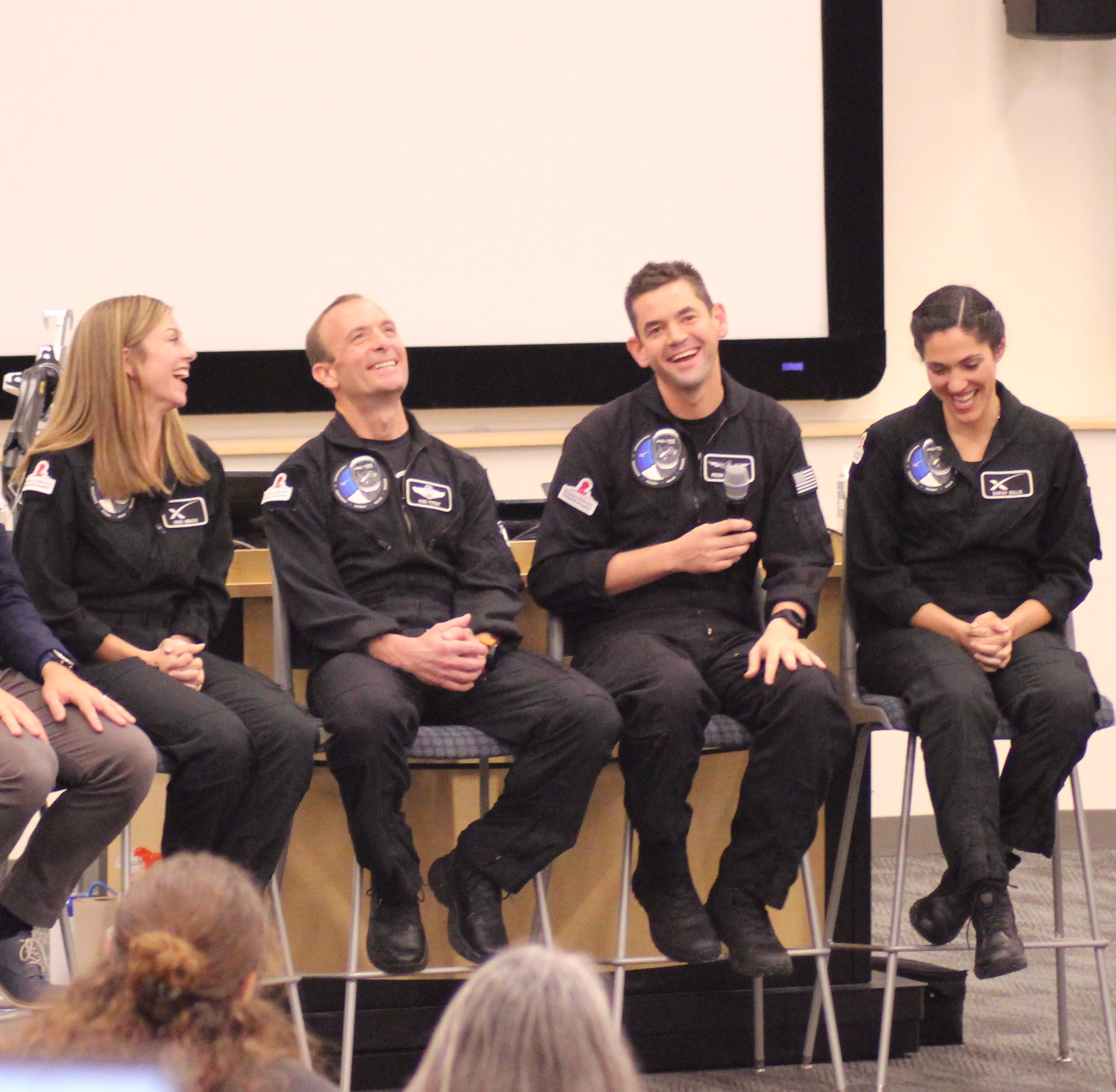
Suited for flight
Polaris Dawn will be hurled higher than any Dragon capsule has gone to date, eclipsing the Earth-orbit altitude record by non-lunar crewed missions of 853 miles, scored during the NASA Gemini 11 missions in 1966. During their five-day flight, the Polaris Dawn crew will slip through portions of the Van Allen radiation belt.
Additionally, the crew will attempt the first-ever commercial extravehicular activity (EVA), a spacewalk making use of upgraded SpaceX-supplied "intravehicular suits" — garments worn inside the capsule.
Who is on tap for that trek outside Crew Dragon?
"We've collectively taken the position that we're all going for an EVA," Isaacman said, adding that the spacecraft cabin is to be depressurized in a hard vacuum.
"Whether you're sticking your head outside, you are doing an EVA. We are contemplating two people on the outside of the vehicle," Isaacman said, "and two would be inside making sure that everything is going correct."
To accommodate the spacewalk, this Crew Dragon will not be outfitted with a transparent dome, as was the case for the Inspiration4 mission.
Read more: SpaceX Crew-3 astronauts have fun testing spacesuits before coming home (photos)
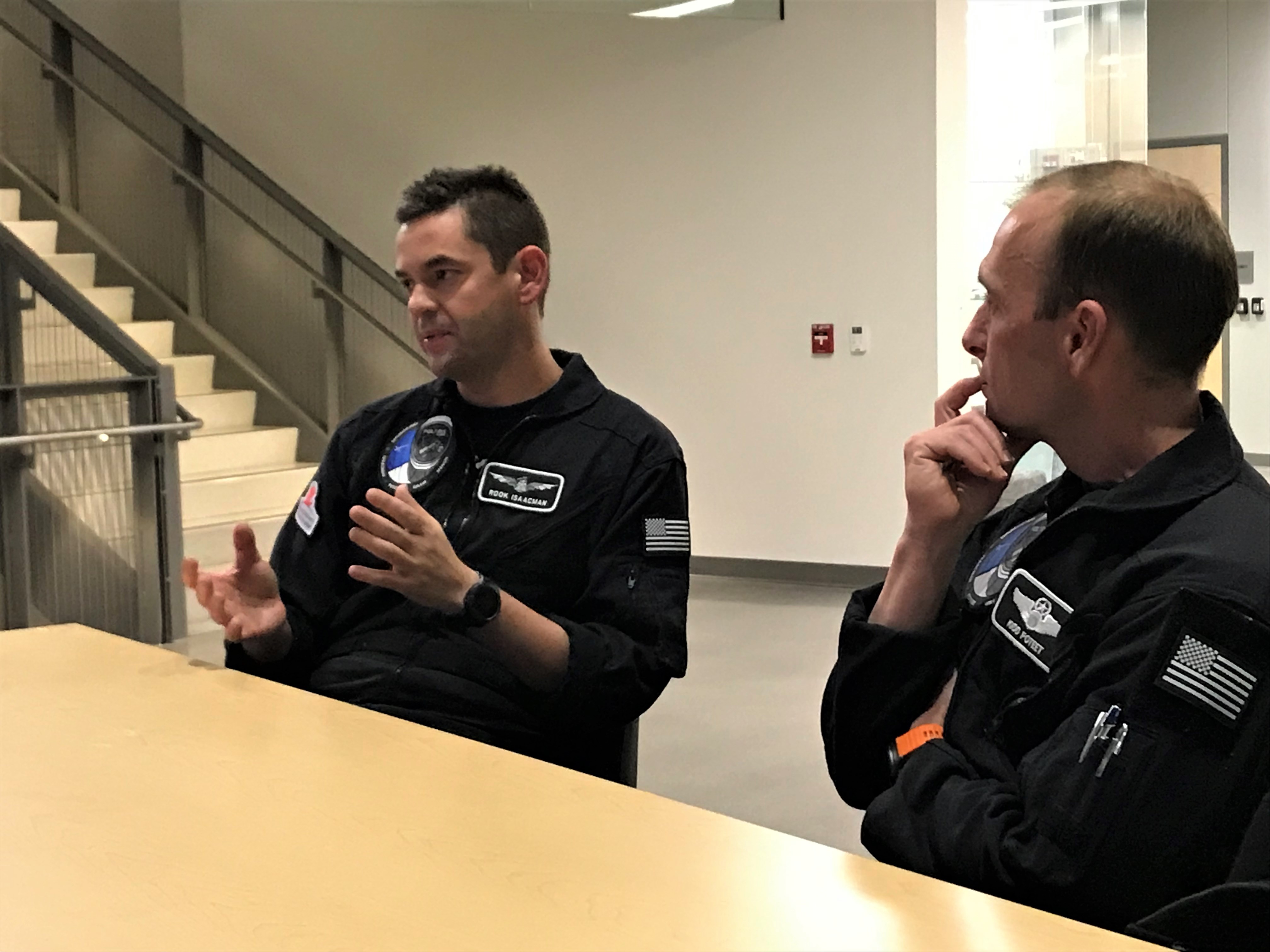
Building group dynamics
"We're spending a majority of our time getting ready," said Scott Poteet, the Polaris Dawn pilot, a retired United States Air Force pilot. He also served as the mission director of Inspiration4.
"I break it down into several categories of our training," Poteet said, "doing the simulators, the checklist procedures and contingency operations, and building the group dynamics. Then there's the specialized portion, training for the EVA. That's a big part of it."
The foursome has climbed a high mountain together and performed a group scuba dive, among other team-building exercises, Poteet said. "We've put ourselves in comfortable and uncomfortable scenarios."
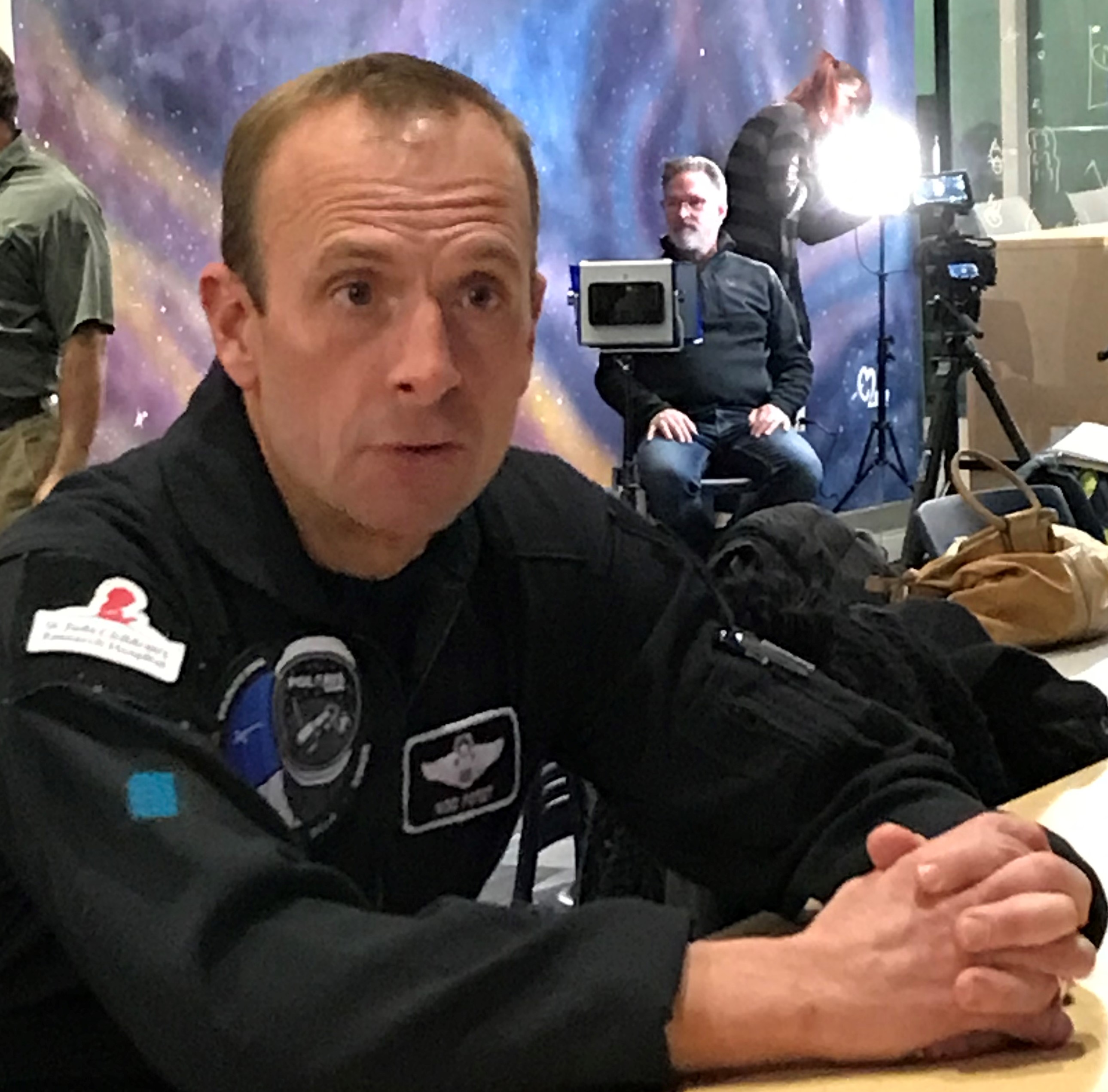
Mutual dream
Joining Isaacman and Poteet on the mission are two SpaceX engineers, Sarah Gillis as mission specialist and Anna Menon, as mission specialist and medical officer.
"I think we dreamed that a SpaceX employee would get to fly on a SpaceX spaceship some day. That's kind of a mutual dream at SpaceX," Gillis said. "But for myself, in my wildest imagination didn't think it would occur this soon, nor did I think it would be me."
Menon said that goes for her too. Prior to SpaceX, she worked for seven years at NASA as a biomedical flight controller for the International Space Station.
Isaacman said having the SpaceX'ers onboard is fortunate. "We have two crew members who will tell us when we're ready. In Sarah and Anna, you have the SpaceX lead astronaut trainer and a SpaceX lead mission director. So they know what a good crew looks like and when they are ready to go to space," he said.
Read more: Polaris Dawn crew training for epic private SpaceX mission this fall
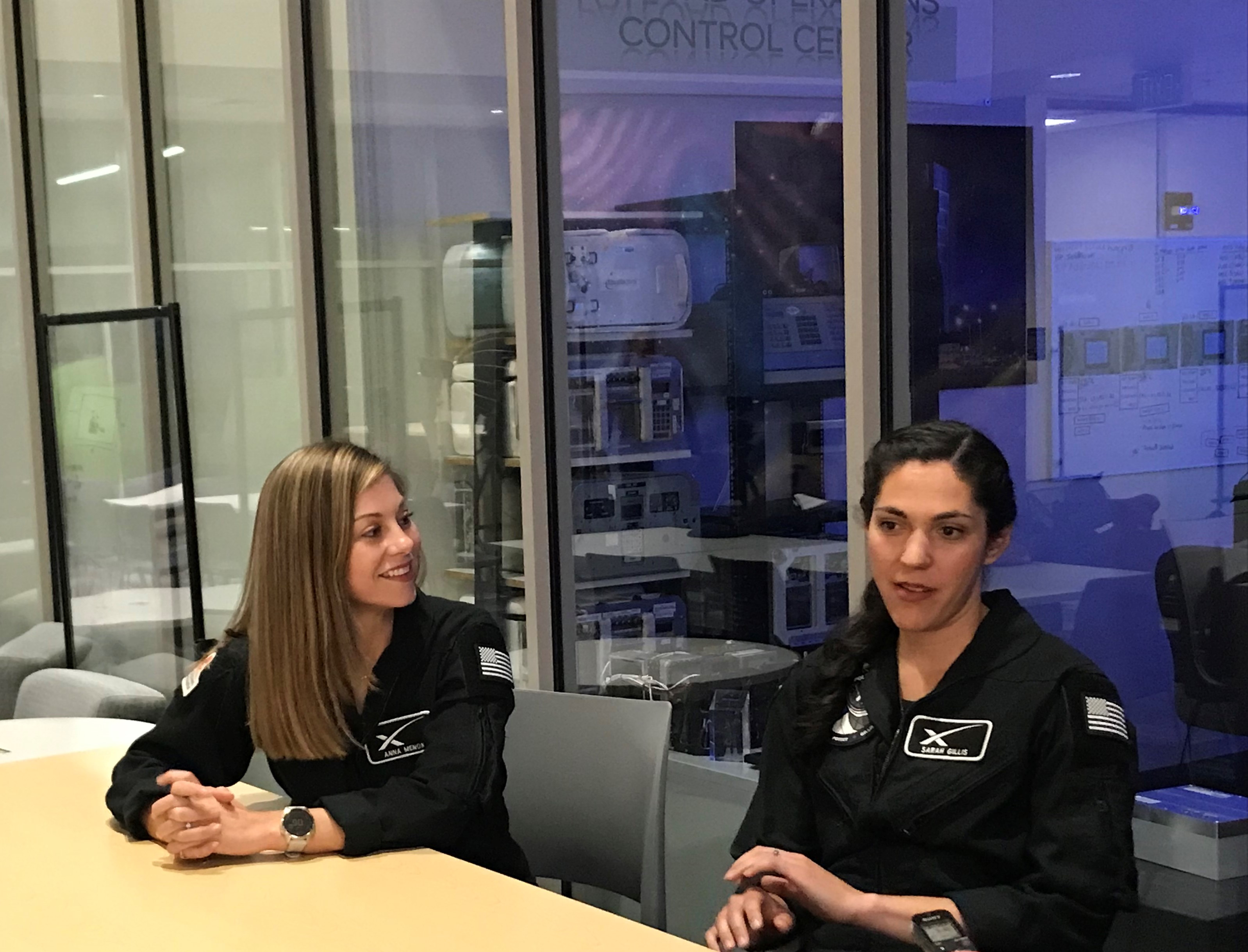
Eye contact
The Polaris Dawn crew visited with University of Colorado, Boulder aerospace engineers Allie Anderson and Torin Clark who are leading five experiments flying on the Polaris Dawn mission. Overall, there are close to 40 experiments to be performed in space for various institutions by the crewmembers.
Anderson's experiment will, for the first time, investigate the time course of spaceflight-induced changes to the human eye through continuously monitoring intraocular pressure, that is, the pressure within the eyeball.
"Our device is a contact lens that measures the pressure in the eye and how that pressure changes over time," Anderson said. "We're also flying a device to see how a person's prescription changes. More data from more individuals is the exciting part."
Replete with an antenna, the contact lens explores how the front part of the eye changes with microgravity exposure. With affection, the Polaris Dawn crew calls it "the cyborg study."
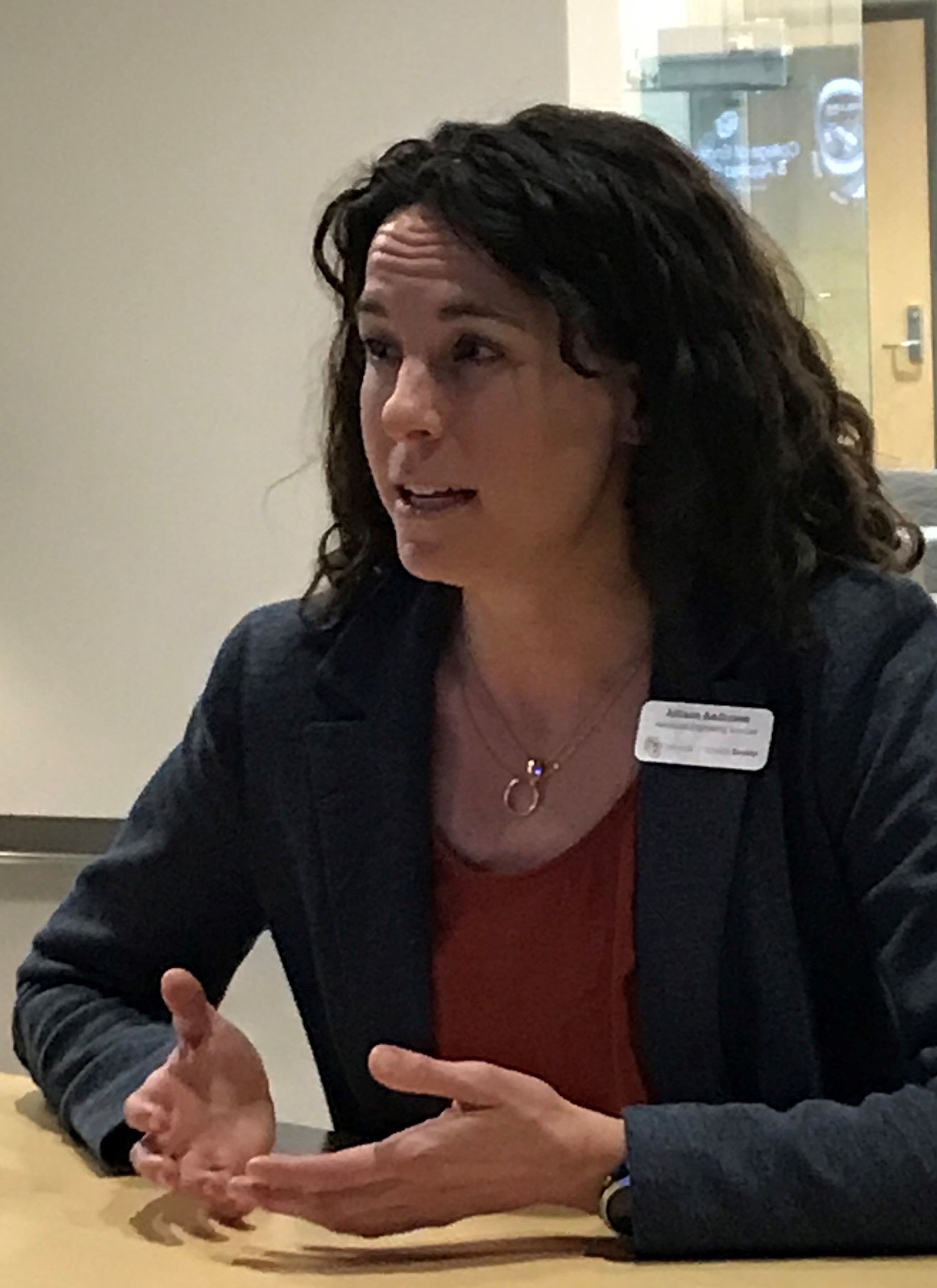
Retina research
Anderson said that attention to a space traveler's eyes is spurred by what is now known as Space-Associated Neuro-Ocular Syndrome, or SANS — viewed as a key risk to human health in long-duration spaceflight.
Prem Subramanian, a university professor of ophthalmology, is also involved in the in-space eye examination. "We're trying to figure out what's causing these eye changes. We've come up with theories based on what we see, but we may be completely wrong," he told Space.com.
Researchers have observed changes in the retina and optic nerve after months of astronaut exposure to microgravity, Subramanian said. "Those haven't resulted in vision changes, but our concern is that they could. We'd like to figure out what's causing this and then how to prevent it."
Read more: 'Why Am I Taller?' explores what happens to the human body in space
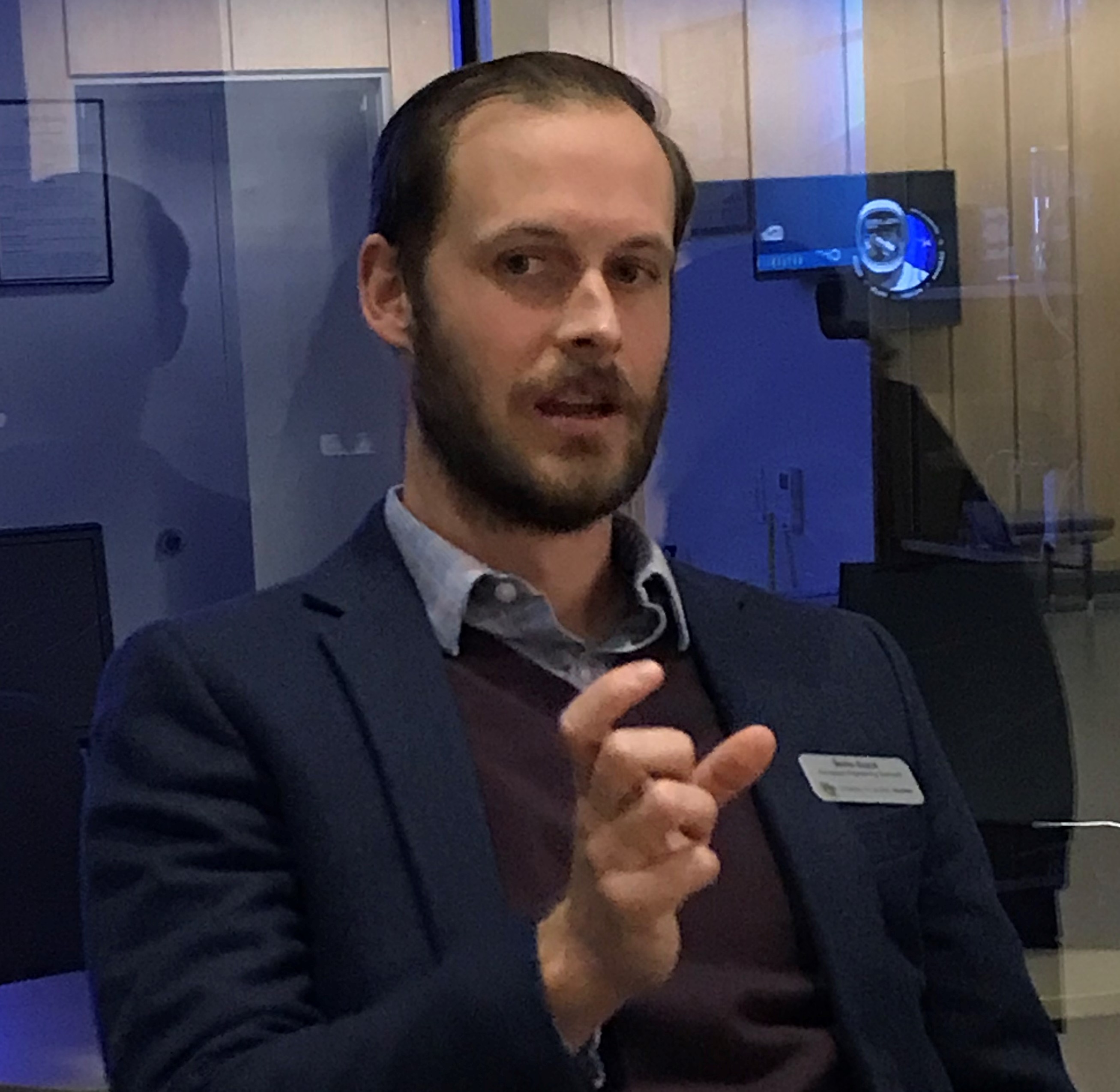
Facial expressions
Torin Clark has four separate, but closely related studies that investigate aspects of sensorimotor impairment and motion sickness associated with gravity transitions into space and coming back to Earth.
"I don't have any payload because the payload is the crew," Clark said. His research will be done through introspective feedback by the Polaris Dawn astronauts.
As for pre-launch advice for his crewmates, Isaacman said that everyone onboard has a lot to offer each other.
"This crew coming together has so much expertise in different areas," Isaacman said. "I have shared what I think is different about what they should encounter when we arrive in orbit. I'm very eager to see their facial expressions," he concluded.
Follow us on Twitter @Spacedotcom or on Facebook.
Join our Space Forums to keep talking space on the latest missions, night sky and more! And if you have a news tip, correction or comment, let us know at: community@space.com.

Leonard David is an award-winning space journalist who has been reporting on space activities for more than 50 years. Currently writing as Space.com's Space Insider Columnist among his other projects, Leonard has authored numerous books on space exploration, Mars missions and more, with his latest being "Moon Rush: The New Space Race" published in 2019 by National Geographic. He also wrote "Mars: Our Future on the Red Planet" released in 2016 by National Geographic. Leonard has served as a correspondent for SpaceNews, Scientific American and Aerospace America for the AIAA. He has received many awards, including the first Ordway Award for Sustained Excellence in Spaceflight History in 2015 at the AAS Wernher von Braun Memorial Symposium. You can find out Leonard's latest project at his website and on Twitter.









